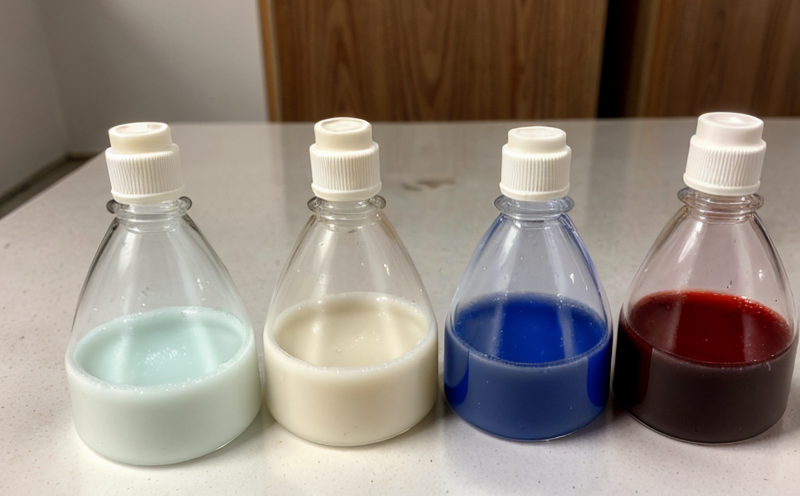EPA 8270 Semi Volatile Monomer Testing by GC MS
The Environmental Protection Agency (EPA) method EPA 8270 is a stringent protocol used for the analysis of semi-volatile organic compounds (SVOCs), including monomers and oligomers, in various environmental samples. This method employs gas chromatography-mass spectrometry (GC-MS) to provide accurate and reliable results.
The primary objective of this testing procedure is to ensure compliance with federal regulations regarding the presence of SVOCs in air, water, soil, and other media. The EPA has established this standard to monitor potential risks associated with exposure to these compounds, which can include adverse health effects such as cancer or reproductive issues.
The method involves several critical steps: sample collection, extraction, concentration, derivatization (where necessary), injection into the GC-MS instrument, and finally, data interpretation. For monomers and oligomers, particularly those used in polymers, this testing ensures that they do not exceed safe limits set by regulatory bodies.
The chosen instrumentation for EPA 8270 includes a high-performance gas chromatograph equipped with an interface to the mass spectrometer. This combination allows for precise separation of components followed by detailed structural analysis via mass spectral identification. The system is calibrated using certified reference materials that trace back to national standards like ISO, ASTM, and EN.
The testing process begins with thorough sample preparation which may involve solid-phase extraction (SPE) or liquid-liquid extraction depending on the nature of the matrix. Once extracted, the compounds are concentrated and possibly derivatized before being injected into the GC-MS for analysis. The resulting mass spectra provide unique fingerprints that can be matched against known standards to identify individual SVOCs present in the sample.
The results from this testing procedure are presented as quantitative concentrations of each detected compound along with their respective retention times and ionization patterns. These data points help determine whether the levels fall within allowable limits prescribed by relevant legislation or company-specific guidelines.
It is important to note that proper sample preservation and handling during collection play crucial roles in maintaining accurate results throughout this procedure. Improperly stored samples can lead to degradation of SVOCs, thereby affecting their detectability and quantification.
In summary, EPA 8270 semi-volatile monomer testing by GC-MS is a vital tool for ensuring environmental safety and regulatory compliance when dealing with potentially hazardous substances like monomers and oligomers. Its rigorous methodology ensures reliable detection and accurate quantification of these compounds in diverse matrices, making it indispensable for industries ranging from manufacturing to pharmaceuticals.
Why Choose This Test
EPA 8270 semi-volatile monomer testing by GC-MS is a preferred choice due to its robustness and reliability. It allows for the precise measurement of SVOCs in various environmental samples, providing accurate data that supports informed decision-making processes within organizations.
Compliance with federal regulations regarding the presence of SVOCs is crucial for maintaining public health standards. By adhering to this method, companies not only demonstrate their commitment to sustainability but also protect themselves from potential legal ramifications associated non-compliance.
The extensive range of applications makes EPA 8270 semi-volatile monomer testing by GC-MS particularly valuable across multiple sectors including petrochemicals, electronics manufacturing, and pharmaceuticals. Each industry has its unique challenges; however, this standardized approach ensures consistent quality assurance practices regardless of the specific application.
Moreover, the use of advanced GC-MS technology enhances the sensitivity and specificity of the test results significantly. This capability enables detection of trace amounts of SVOCs that might otherwise go undetected using less sophisticated methods. Such precision is essential for identifying early signs of contamination or breaches in safety protocols before they escalate into larger issues.
Finally, choosing EPA 8270 semi-volatile monomer testing by GC-MS offers peace of mind knowing that you are employing best practices recognized globally. Industry leaders trust this methodology because it consistently delivers high-quality results backed by extensive research and development efforts over many years.
International Acceptance and Recognition
EPA 8270 semi-volatile monomer testing by GC-MS enjoys widespread acceptance both domestically and internationally. The method has been widely adopted as a standard for assessing SVOCs in numerous countries around the world.
In Europe, several national standards closely follow or reference EPA 8270, including EN 16359 which deals with the determination of volatile organic compounds in ambient air. Similarly, ISO/IEC 17025 accreditation ensures that laboratories performing this type of analysis meet stringent quality requirements.
On a global scale, there is increasing recognition for the importance of SVOC monitoring through international frameworks such as those established by the United Nations Environment Programme (UNEP) and World Health Organization (WHO). These organizations often recommend EPA 8270 due to its comprehensive nature and proven reliability.
The acceptance of this testing procedure extends beyond governmental bodies into private sector settings where companies implement internal controls aimed at reducing risks related to SVOC exposure. Many large corporations have adopted EPA 8270 as part of their standard operating procedures (SOPs), ensuring consistent quality across all operations worldwide.
Ultimately, the global adoption of EPA 8270 semi-volatile monomer testing by GC-MS reflects its status as an industry benchmark. By adhering to this methodological approach, organizations can confidently meet regulatory requirements while contributing positively towards protecting public health and environmental sustainability efforts globally.
Use Cases and Application Examples
EPA 8270 semi-volatile monomer testing by GC-MS finds extensive application across various industries where the presence of SVOCs needs to be monitored closely. Here are some specific use cases:
Petrochemical Industry: Ensuring compliance with emission limits for SVOCs emitted during refining processes.
Pharmaceutical Manufacturing: Verifying the purity and safety of drug formulations by detecting unwanted SVOC residues.
Consumer Goods Production: Screening raw materials and final products to ensure they comply with regulatory standards regarding SVOC content.
Environmental Monitoring: Collecting air, water, and soil samples to assess ambient levels of SVOCs in different environments.
In each case, EPA 8270 semi-volatile monomer testing by GC-MS plays a critical role in identifying potential risks associated with SVOC exposure. The results generated from this method provide valuable insights into the effectiveness of mitigation strategies implemented within these sectors.





